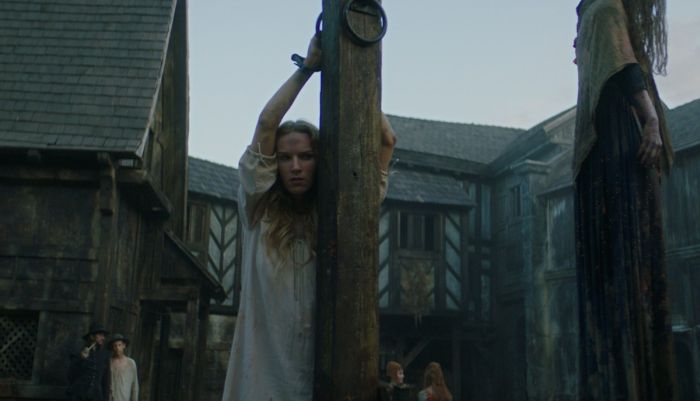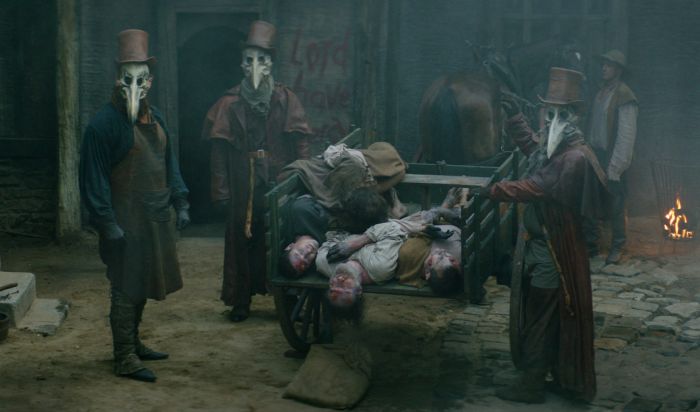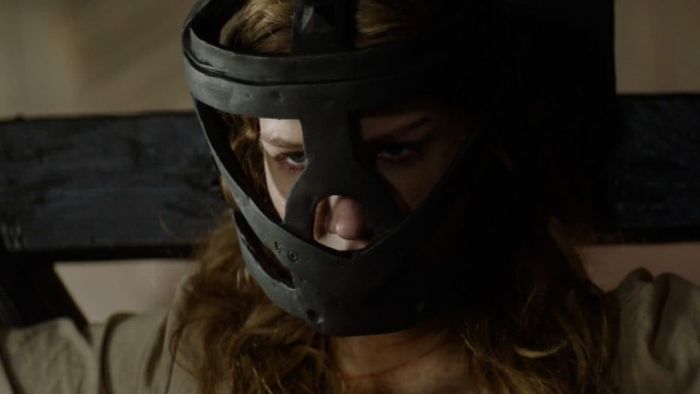Help me, witch!
The year 1665. A plague is taking its toll in Europe. Social moods worsen – people panic, look for a scapegoat to blame for the plague. In this reality, Grace (Charlotte Kirk) must find herself – a young mother, and after her husband unexpectedly commits suicide, also a new widow. And though fate hasn’t been gentle with her so far, the worst is yet to come; when a woman rejects the advances of an influential heir (Steven Waddington), he publicly accuses her of infatuation. The crowd receives the accusation unequivocally – here the young girl blasphemed, having entered into a deal with the devil and practicing witchcraft. There can be only one sentence – here is the harlot, like her mother years ago, is to be burned at the stake. Before this happens, however, she will spend long days and nights locked in a dungeon, subjected to elaborate torture.

Source: film-cred.com
To die of boredom
The filmmakers, led by Neill Marshall – the director and co-writer – tackle the problem of deeply entrenched misogyny. The problem that in the cinema landscape after #metoo , the time of regaining subjectivity by victims of violence and settling accounts with systemic sexism, is and will probably remain a frequent and popular topic for a long time to come. Dressed in gothic horror robes and inspired by real events *, it carried the potential for a juicy story of revenge against an oppressed individual or a perverse variation on the power of femininity and the anachronism of Puritan patriarchy, such as the warmly welcomed WitchRobert Eggers. He could also draw inspiration from Gothic iconography and literature to create a dense atmosphere of horror, using supernatural elements present in the story. He did not do it – the film is completely devoid of climate, and the feeling of fear is replaced at times by anger, at times by frustration, and most often by simply … boredom.
Marshall tries to save honor with his mouths popping out of nowhere and other primitive scarecrows. However, these, devoid of any specific idea of evoking anxiety in viewers, remain extremely ineffective. The form that Marshall and Luke Bryant, the cinematographer, treats us with doesn’t help either. Visually, The Reckoning … stands between a television theater show and an episode of a low-end series. The frames illuminated in low key were probably to some extent mask the shortcomings and shortages resulting from the reasonable budget, but, as shown by cult examples (operating at microscopic rates, the Blair Witch Project , Paranormal Activity , Halloween , or those from a slightly higher financial shelf – Babadook ,Piła or even Marshall’s Descent ), with a little determination and creativity, modest means do not have to be only an obstacle, they can also become an opportunity. Meanwhile, the generic costumes and blueprints might as well be the work of an algorithm’s selection. Siri, generate period pictures? What? Is it important?

Source: substreammagazine.com
About how the peasant talked about women
You could turn a blind eye to everything, perhaps even justify certain decisions, if the film was based on a strong, precise script, clearly communicating the intentions of Marshall and the other filmmakers (Charlotte Kirk and Edward Evers-Swindell also signed the script) . Meanwhile, it is difficult to clearly read what exactly we are dealing with. Grace is by no means the subject of her own story, but the subject of physical and psychological violence grounded by the male point of view. And although the intentions of the creators seem noble, the emphasis they ultimately placed on visualizing the cruelty perpetrated by heroin perpetrators makes it instead of a feminist message about the power of femininity as a salt in the eye of a toxic, patriarchal environment (such as I believetorture porn . Whipped, beaten and stabbed, the heroine screams into the sky, and the viewer suffers with her …
The Reckoning does not work as a genre horror with a gothic tone, nor as a feminist manifesto. It is also difficult to find traces of realism and meticulously verified facts in it – in this respect Marshall’s nightmare is closer to a fantasy about past eras, in which various things (both mundane and those beyond the limits of human perception) simply happen without internal logic and cause-and-effect relationship; I will not even mention the modern English grinding in the mouths of seventeenth-century heroes. On the other hand, when it comes to female trauma, maybe it is worth simply … giving the floor to women themselves **?

Source: alternateending.com
* Marshall suggests that more than half a million people were expected to die in the witch trials. This data is definitely overstated; Nowadays, it is estimated that this number fluctuated between 30,000 and 100,000 victims, mainly women – including probably around 1,000 in Poland alone. For those interested in the subject, we can recommend the series by Bohdan Baranowski, which Agnieszka wrote about in our pages .
** I can mention at least a few noteworthy titles – the hit, Promising. Young. Woman. Emerald Fennell, series: I Can Destroy You Michaeli Coel, Unbelievable and the media series Catch it and Twist Your Head .

